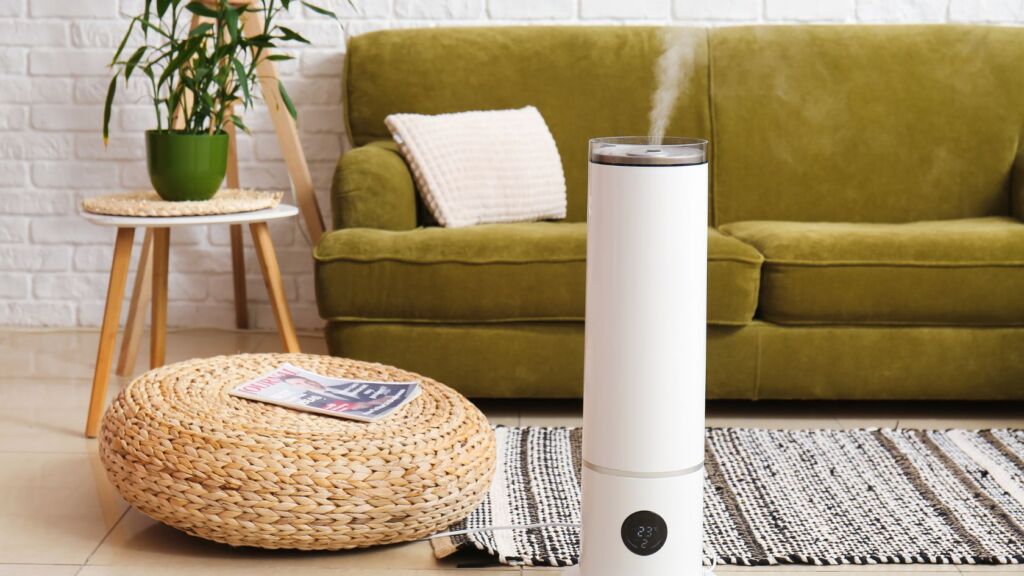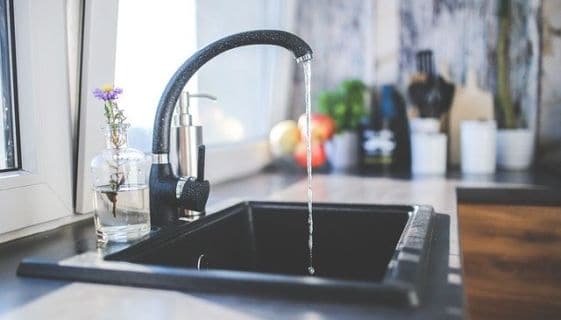Did you know that indoor air is typically much more polluted than outdoor air? And it’s even worse during winter, when we typically keep our homes buttoned up tight. Most of us don’t want to throw open the windows for a burst of fresh air and waste energy by heating the great outdoors. But how else can you improve your indoor air quality in the depths of winter? And why is it important anyway?
Well, for one thing, we spend a lot more time indoors during the winter months, often the majority of our day, and up to 100% for those who work from home. Given that we breathe on average 12 times a minute, that’s a lot of exposure time to whatever chemicals lurk in the home.
Indoor air usually contains a sorry cast of pollutants: formaldehyde, benzene, flame retardants, dust and dust mites, mold, cleaning and fabric chemicals, and the list goes on. Poor indoor air quality can lead to many health conditions, such as headaches, breathing difficulties, ears, eye and throat irritation, skin irritations, asthma, cardiovascular disease, and even cancer. The lungs are obviously most at risk.
A strategy to improve indoor air quality involves three steps:
1. Remove or reduce what’s causing poor air quality in the first place.
2. Ventilate your space.
3. Filter and/or clean the air.
The first one is most important.
1. Remove or reduce what’s causing poor air quality in the first place.
Homes are filled with chemicals that off-gas harmful VOCs (or Volatile Organic Compounds) from products like cleaning supplies, personal care products and products with any type of chemical fragrance. Even scented garbage bags contribute to indoor air pollution. Avoiding or reducing the use of these products can really help.
- Replace PVC (polyvinyl chloride) blinds or shower curtains with ones made from EVA or PEVA. They are considered safer and less toxic than PVC, which releases harmful hormone-disrupting chemicals known as phthalates.
- Avoid burning regular paraffin candles or incense. They create soot and other fine particulate matter (see our blog on safe candles).
- Choose solid wood furniture when possible, as particle board or pressed wood releases formaldehyde, which is known to cause cancer in humans.
- Dust frequently using a wet method – damp cloth or mop – or non-nanosilver microfiber cloth) on a frequent, regular basis. If you own a pet, it helps to bathe or brush Fido regularly!
- Vacuum with a good HEPA filter (High Efficiency Particulate Air) and change it frequently.
- Shake small rugs outside.
- Avoid dry cleaning. Dry-cleaned clothes are usually treated with PERC, a reproductive toxicant, neurotoxicant, potential human carcinogen, and persistent environmental pollutant. PERC can off-gas into your closet and home.
- Choose clothing and fabrics not chemically treated with stain repellents or flame retardants.
- Wipe down electronics, as they have usually been treated with flame retardants.
- Avoid doing home renovation projects in winter.
- And yes, remove your shoes at the door. This will keep you from tracking in all kinds of chemicals and toxins that may adhere to your footwear.
2. Ventilate your space.
Ventilation means to circulate air, usually by opening windows – out with the stale, in with the fresh. (This is not to be confused with air fresheners which may release many toxic chemicals. Do not use these products!) While opening windows in winter seems counterintuitive, choosing a warmer-than-usual day to do so once in a while can produce a nice air exchange.
Most houses have ventilation in the bathrooms and in the kitchen over the stove and oven. Running these vents draws the indoor air outside, and new fresh air will enter the house through cracks, door jams and other minor leaks. A vent that exhausts to the outside is crucial in reducing the pollution created while cooking with either gas or electric appliances. If you do not have a vent, open a window, especially when using gas.
3. Filter and/or clean the air.
Filtering and cleaning the air can be done more easily now using standing air filters and purifiers. Filters and purifiers work in slightly different ways. Both can reduce pet dander, smoke, soot, some VOCs (volatile organic compounds), pollen, mold, mildew, bacteria, fungus, dust mites, airborne fibers, and particulate matter. Many pollutants are so small you cannot see them. These machines can capture particles that are 200 times smaller than the width of a hair.
Filters work by trapping pollution and particles. Choose filter or UV types. Avoid using electrical purifiers because they emit ozone, an oxidant that can irritate the lungs. Look for “ozone-free”.
Be sure the capability of your air filter or purifier matches the space you wish to clean – the bigger the space, the bigger the filter. Bedrooms are often a favorite space to begin with since we spend a good portion of our day in bed.
Passive forms of air cleaning include using charcoal sticks or pellets. VOCs are drawn to and attach themselves to the activated charcoal. (Charcoal is used in filters for both air and water.) Charcoal-filled bags are often used in closets for absorbing odors.
Note that some air conditioning and heating systems also filter the air. While the air is circulating in order to heat or cool the home, it passes through an air filter. Having a high-quality HEPA filter with a MERV (Minimum Efficiency Reporting Value) rating of 13 is best. Replace these on a regular basis. Use the circulation (or fan) mode if your heating system has one.
Houseplants can also be an effective way to clean indoor air. Recent research showed that 5 different house plants, including jade and spider plants, have the ability to remove VOCs (8 common VOCs were tested). Effectiveness varies, so while using plants to clean your air might not make a huge impact, every little bit helps.
Keeping your air clean is very important, which is why it is one of the five environmental keys of the Anticancer Lifestyle Program. But it turns out that the desire for good indoor air quality is not new. In 1858, Max von Pettenkofer (considered the father of modern hygiene) wrote: “If a space contains a pile of manure, one should not try to remove the odor by ventilation but rather remove the manure.”
In the 21st century, “manure” comes in the form of chemicals commonly found in household products. These tips should make it easier for you to take a breath of fresh air, or at least fresher air, in your home during cold weather.



 Deborah deMoulpied
Deborah deMoulpied 

